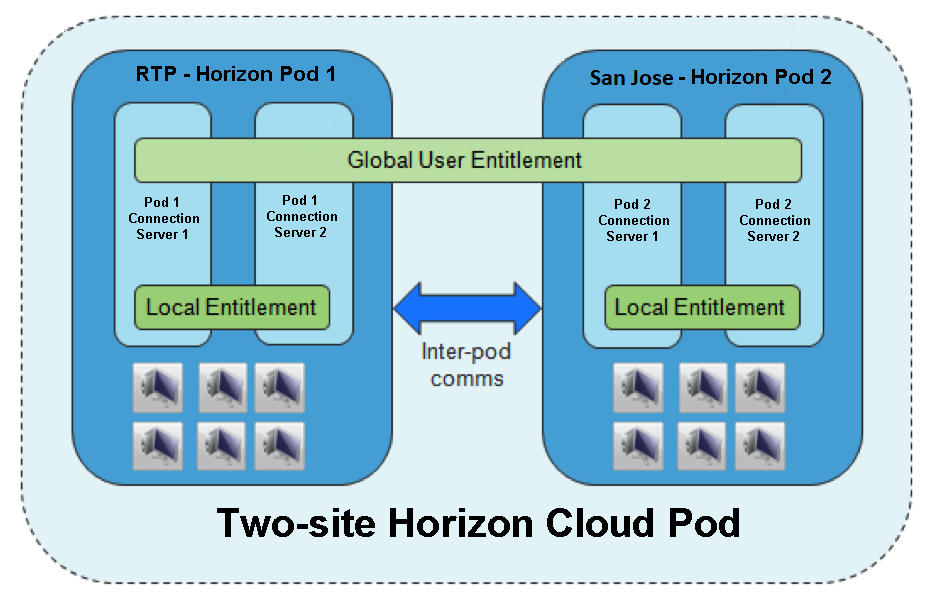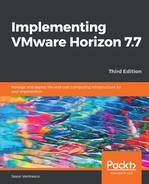A VMware Horizon Cloud Pod consists of an integrated set of Horizon pods, which may or may not be located within the same datacenter, and which clients are entitled to, and can, access as if it were a single pod. Prior to the introduction of the Cloud Pod feature, each pod was entitled and accessed separately, which made it difficult to deploy a multi-site Horizon architecture that appeared as a single pod to Horizon clients.
In a traditional VMware Horizon implementation, each pod is managed independently. With the Cloud Pod feature, you can join together multiple View pods to form a single Horizon implementation called a Pod Federation. While the Horizon pools are still managed at the pod level, Cloud Pod entitlements span all member pods, and Horizon clients can access any entitled pool from any member Connection or Security Server.
The terms Cloud Pod and Pod Federation will be used somewhat interchangeably in this chapter. You will also encounter this if you review the VMware document Administering Cloud Pod Architecture in Horizon 7 (https://docs.vmware.com/en/VMware-Horizon-7/index.html).
A Cloud Pod can span multiple sites and offers the following benefits (among others) over the previous single-Horizon pod model:
- Centralized management of global entitlements to Horizon pools in up to five distinct sites.
- Cloud Pods can balance the Horizon client load across multiple datacenters using centralized rather than individual login portals:
- While a Cloud Pod aggregates Horizon pools from multiple Pods into a Cloud Pod, Horizon can automatically route client connections to desktop or application pools located at their home site.
- Clients can be entitled to desktop or application pools in up to 25 Horizon pods across ten sites. Rather than selecting which pool to use when logging in to the Horizon client, the user is presented with only one pool, and the assignment of resources is handled automatically based on how the global entitlement is configured.
- Using Horizon Cloud Pods, we can enable native Disaster Recovery (DR) for the Horizon infrastructure.
The following diagram is an example of a basic Horizon Cloud Pod architecture:

In the example topology, two previously standalone Horizon pods in different datacenters are joined together to create a Pod Federation. In a Pod Federation, an end user can connect to a Horizon Connection Server instance in the Research Triangle Park (RTP) datacenter and can be assigned a desktop located in a completely different Horizon pod located in the San Jose (SJC) datacenter.
